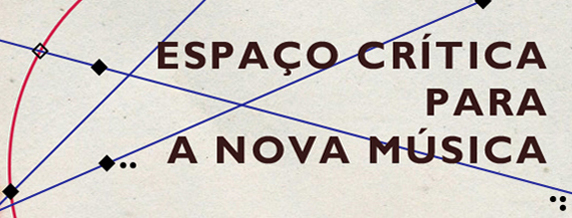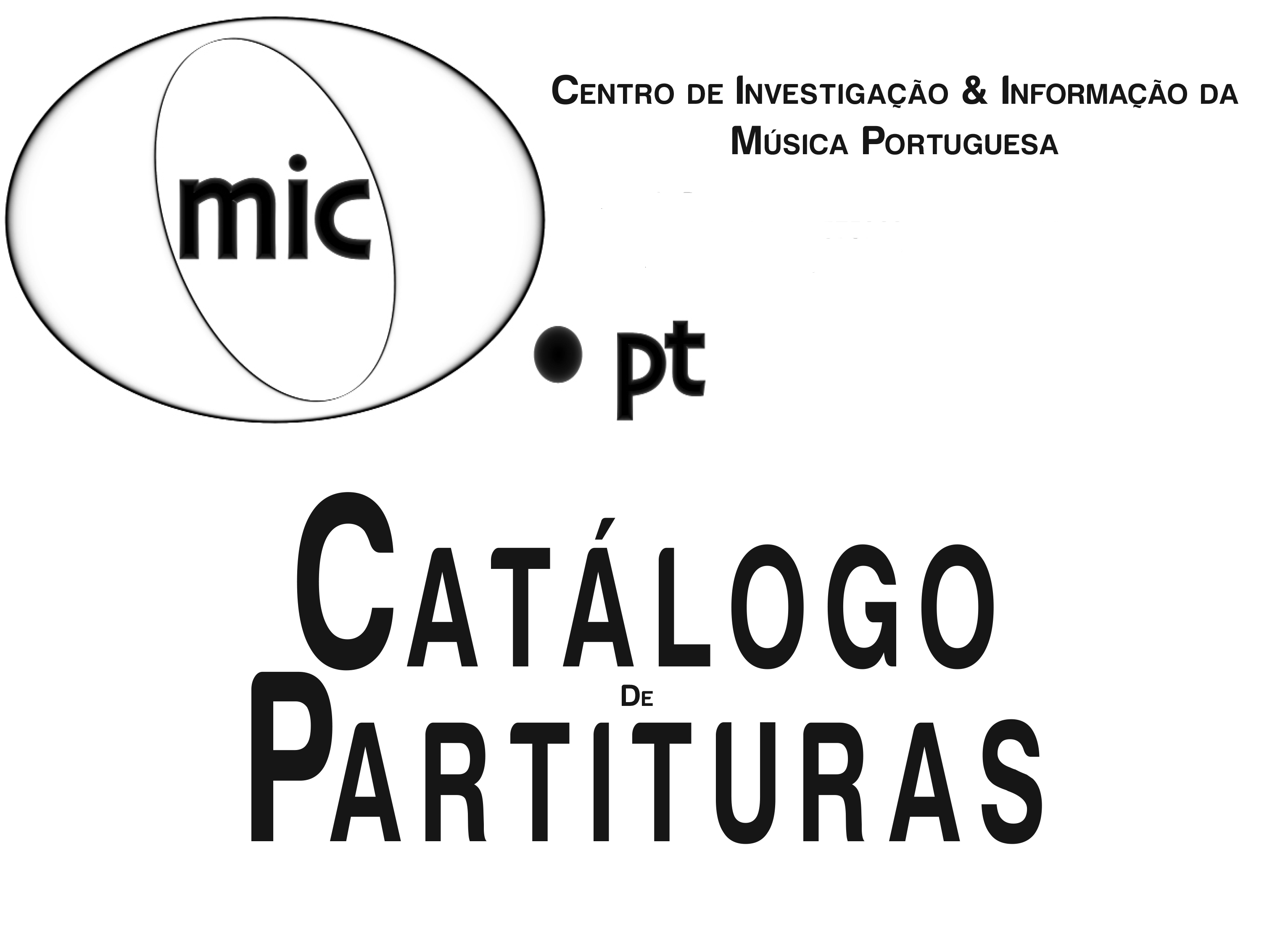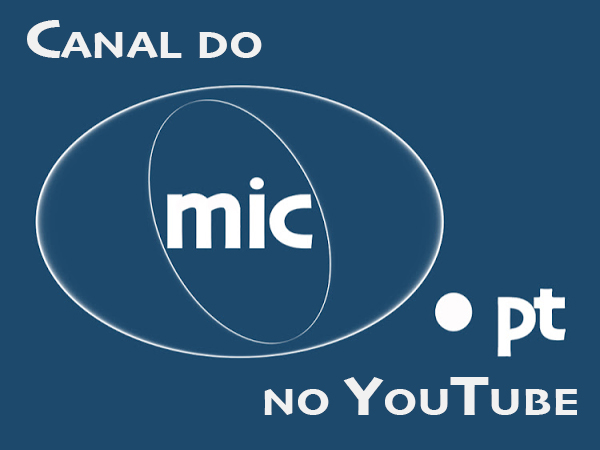Maria de Lourdes Clara da Silva Martins was born in 1926 in Lisbon. She was a pianist, composer, teacher and pedagogue. She began studying the piano with her mother, Maria Helena Martins. She entered the National Conservatory (in Lisbon) in 1940. In 1944, she finished the Piano Course in the class of prof. João Abreu e Mota. She began studying composition with Artur Santos and Jorge Croner Vasconcelos, and got the Composition Degree in 1949.
An important teacher
It was from her lessons with Jorge Croner Vasconcelos that she began to have a serious interest in composition. In an interview by the MIC.PT in 2004, she told us a little about the importance of the lessons with that teacher: "It was not exactly in the composition itself, but his broad-mindedness. There was a lesson from Croner de Vasconcelos where he talked about hats! He talked about completely different things, but always returning to music. He had a huge culture. I was a piano student and went to the composition to improve my culture, not to be a composer. What I did in music was to adapt verses or words to the musical text. Once again, Croner said to me, 'that's fine, but now jump 200 years!' I was doing things in a very academic way: fugues, inventions, etc. I remember I went to the piano to look for what sounded best."[1]
At the same time Maria de Lourdes Martins also took the course of harpsichord and clavichord with prof. Macário Santiago Kastner and was a student of Marcos Garin. She was pianist of the National Radio, performing mainly her works, and held various performances and recitals in Portugal and in the German radio, Heidelberg and Freiburg. She was a founding member of the Portuguese Musical Youth, created in 1948. In the same year she joined the Board of the International Society for Music Education.
Munich and Darmstadt courses
With a scholarship from the Gulbenkian Foundation in 1959, she studied composition with Harald Genzmer at the School of Music in Munich (1959-1960). After that, she attended special courses of composition in Darmstadt with Karlheinz Stockhausen, in 1960. In 1961 she attended a workshop in film music at Cine Città in Siena, with Angelo Francesco Lavagnino, and another composition seminar with Bruno Maderna in Darmstadt.
Regarding the Darmstadt courses experience, she recalls: "There I saw another world, things were fantastic. Everyone wanted to learn, and some could in fact learn. Nowadays, I do not know what is the force that Darmstadt has, because I moved away a bit. But at that time it was important. I saw good composers, and others who might not be so good, but creativity reigned. I remember a work consisting of climbing up to a seat and then there was a lamp with a stick that produced sound around the lamp - and this was the work! That is, we began to compose from scratch. Currently, I think that we are again doing this, but with a new vision."[2]
A work to discover: "I like the new"
Maria de Lourdes Martins wrote dozens of compositions, including chamber music pieces, dramatic music, pieces for orchestra and instrumental ensembles, keyboard and vocal music. Additionally, she has lots of music written for children and for teaching purposes. Much of her work is still unknown, although there are some (few) edited recordings with her music. In an interview, answering the question if each new work was a new adventure for her, Maria de Lourdes Martins stated: "Exactly, I like new."[3]
In a first phase she wrote several pieces for piano and chamber music, as the Sonata (for violin and piano, 1948), or Sonatinas for oboe and violin (1948 and 1949). Later she assumed the technical limitations she had at the time: "I wanted to follow composition courses as a listener, because I felt I lacked knowledge. I wrote almost like an amateur. I lacked, for instance, knowledge about instrumentation and orchestration, and harmony, I worked a lot on this. When I made the Sonatina for wind instruments I had stored the scientific knowledge that I lacked before. I felt that from then on I could take a big leap."[4]
In 1959 she writes the piece that the composer considers a “transitional work”: Sonatina for wind instruments, awarded by the Portuguese Musical Youth. In the same year she wins the Carlos Seixas prize awarded by the SNI (National Information Secretariat, responsible for the official propaganda of the Salazar regime) with the piece Trio (violin, cello and piano). Another work of transition into a new phase as a composer is Pezzo grotesque, a piece for orchestra, 1959. This new phase is considered by the composer as less indebted to her early influences, Hindemith, Bartók and Stravinsky: "Going a little back, when I started I loved Bartók and, partly, Stravinsky. And actually my music has influences of these composers - critics said, and it is true -. Perhaps not conscious, which is natural because I liked them very much."
[5]
Her own musical language
The composer developed from then on a personal language, "focused mainly on atonality, timbre research, combined with the use of aleatoric music and improvisation." [6]. In the 1960s Maria de Lourdes Martins was interested in the new musical trends, such as musique concrète, and in particular for the twelve-tone serialism although following serialism just for a short time. As she claimed: "I do not like brakes, bars... and lately I also decided to leave the twelve-tone and make melodic and harmonics schemes of my own. To imagine the work’s conception itself, as a foundation for what I'll do after, that can be modified." [7] Esqueletos para quatro instrumentos (flute, bassoon, viola and piano, 1963) is already a work that represents a new form of composition and a "stylistic turning point". [8]At the same time, a new generation of Portuguese avant-garde composers appeared, including her colleague Jorge Peixinho. In 1965 she writes another important work: her cantata O Encoberto, based on Fernando Pessoa's texts, commissioned by the Gulbenkian Foundation. "They gave me the freedom to write for the formation I wanted. The Gulbenkian commissioned a work to me, and I did O Encoberto", says the composer [9]
In the 1960s and 70s Maria de Lourdes Martins continued her formal research, looking for new structures and sounds, in works like Convergências or Sonorità (both from 1970), using harmonies with plenty of clusters in later works: Catch, for piano (1981) Ritmite, for piano (1983) or 10 Momentos, for harpsichord (1985). At the same time, she was pursuing new forms inspired in Portuguese popular music, crossing it with compositions with pedagogical concerns, for example harmonizing folk songs for children. According to Sérgio Azevedo, the final phase of her life as a composer is a time of synthesis "of the past and present languages." For example, Azevedo writes about her Piano Concerto (1990): "The extreme movements, the first post-serial and the third bartokian, surround a slow and quite longer movement, searching for sounds inside of the piano like John Cage."[10]
In 1971 she was once more awarded by the Gulbenkian, for the work O Litoral (with Almada Negreiros’ texts). After some dramatic music experiences (Silêncio, onde estás tu?, tale for radio with text by Teolinda Gersão, 1958, and A outra morte de Inês, stage music for a play by Fernando Soares Luso, 1972), Maria de Lourdes Martins composed two operas: Três Máscaras (opera in one act from José Régio) and in 1995, the opera for children Donzela Guerreira, with libretto by António Torrado. The composer considers that these are two of her most important compositions from the 1980s. About Três Máscaras (Three Masks) and the use of three jazz groups in instrumentation, she said: "It was controversial at that time, but I wanted to make an impact. I felt I was falling in a too straight way of composing, so that was a way of looking for new things. I do not know jazz, but I listen to jazz, and I was interested in improvisation. I tried to make something that the performer could create by himself."[11]
Pedagogy and introduction of the Orff method
It was in Germany that the composer got to know the pedagogical work of Carl Orff, and translated and adapted to Portuguese two volumes of his method in the early 60. This influence was decisive in her work of musical pedagogue, but not so much in her composition.
"When people think I'm influenced by Orff, I think I'm nothing. What I did was Orff-Schulwerk, with the kids, but it's very different from Orff as a composer. He was a very open-minded person, with a great culture, and I knew I was not “Orff” in the composition. But the idea he had for the children was to combine movement and music. He was here in Portugal a fortnight, and told me: 'I know that you do not compose anything from my school.' But he didn’t mind at all!"
[12]
Maria de Lourdes Martins graduated in Orff Schulwerk at the Mozarteum in Salzburg (1965), and was responsible for the introduction of this children's musical learning system in Portugal.
On meetings with Carl Orff, she said: "I was attending a conference by Orff at the University of Munich. He moved, walked, danced, did everything. It was not like those conferences we are used to, it was a living form he made others create. This conference was of great interest - I thought it was going to be a nuisance, and it was actually fantastic. At this time I was, however, working with Stockhausen, which was completely different."
[13]
Maria de Lourdes Martins was responsible for the musical initiation courses for children and teacher training at the Gulbenkian Foundation until 1975, at the invitation of Madalena Perdigão, "I had to make reports to the Gulbenkian as I was in Germany with a scholarship, and I told her about the conference. Madalena Perdigão told me she wanted to experiment that method in Portugal. I began to teach the children who did not pay anything to have this experience. Then I went to teach the teachers."[14]
With a scholarship of Gulbenkian and the Mott Foundation, she attended the courses for direction of community schools (in Flint, USA, in 1969) and Kodaly courses (1970, Hungary). She was part of the Board of the International Society for Music Education (between 1972 and 1976) and joined the direction of the Portuguese Musical Youth. She was a founding member of the Portuguese Association for Music Education (1972). Alongside her intense activity of dissemination and pedagogical training, Maria de Lourdes Martins taught in different schools, including: Coimbra Institute of Music (piano and composition 1956-58), the Academy Luisa Todi Setubal, training school of the Art Education Teachers (1971-74), the Higher Theatre School (1971), the Music School of Torres Vedras (1978-83). She also gave lessons of Analysis and Composition Techniques at the National Conservatory (between 1971-78 and then from 1983 until her retirement in 1996).
The importance of improvisation
One important aspect of the pedagogical ideas that she followed and developed was the attention given to improvisation and creativity in teaching. In a 1974 article she wrote: "Improvisation is the most important mean to develop the creation skills needed to express musical concepts." As Maria Helena Vieira wrote an article about the pedagogical contributions of Maria de Lourdes Martins: "(...) this ability of creation was essential, not only in the discipline of musical education, but also in instrumental education and composition. The absence of creative activities in the classroom, and an out-dated teaching, based on the tradition of reproduction of the works of the old masters, were considered the main causes of the lack of spontaneity and enthusiasm of the students as well as for their poor preparation for the insertion in the professional life of a musician or a teacher. "[15]
Between research and spontaneity
The diversity of the work of Maria de Lourdes Martins, marked by her intense work in the educational field, reveals a composer open to different aesthetical currents, with broad horizons and a permanent curiosity. For Maria de Lourdes Martins to compose always meant "to invent" and "to discover" with a technique that has evolved in a personal research. She always tried to renew the freshness and spontaneity of creation: "My writing style is derived from a desire to learn. The initial idea was not to compose, but it started to interest me and the piano was left behind. Composition interested me, in fact, much more. (...) I when I write, I write very quickly, because I already have all in my head. It's not the form that comes to me or me going towards it; it is everything together. Then, to get things out, I just have to write, because everything is already inside. For a long time, that's how I wrote, but then I started to have a certain technique of mine. "[16]
At the end of her life, though considerably disappointed with the devaluation of her work, and the lack of concerts with her music, she continued to reveal herself as a composer with an amazing openness to novelty and enthusiasm for new music that was there since her first steps: "I like the new!"
---
1 Calixto, João Carlos, Interview with Maria de Lourdes Martins, on-line edition CIIMP/MIC.PT, Dez. 2004;
2 Calixto, João Carlos, idem;
3 Azevedo, Sérgio, “entrevista a Maria de Lourdes Martins”, in A Invenção dos Sons, ed. Caminho, Lisboa, 1998;
4 Azevedo, Sérgio, idem;
5 Azevedo, Sérgio, idem;
6 Latino, Adriana “Maria de Lourdes Martins”, in Enciclopédia da Música em Portugal no século XX, ed Temas e Debates/INET, 2010;
7 Azevedo, Sérgio, “entrevista a Maria de Lourdes Martins”, in A Invenção dos Sons, ed. Caminho, Lisboa, 1998;
8 Azevedo, Sérgio, “A música de Maria de Lourdes Martins”, in Arte Musical, n.º 10/11, Janeiro-Junho 1998, ed. JMP, Lisboa;
9 Calixto, João Carlos, Interview with Maria de Lourdes Martins, on-line edition CIIMP/MIC.PT, Dez. 2004;
10 Azevedo, Sérgio, “A música de Maria de Lourdes Martins”, in Arte Musical, n.º 10/11, Janeiro-Junho 1998;
11 Calixto, João Carlos, Interview with Maria de Lourdes Martins, on-line edition CIIMP/MIC.PT, Dez. 2004;
12 Calixto, João Carlos, idem;
13 Calixto, João Carlos, idem;
14 Calixto, João Carlos, Interview with Maria de Lourdes Martins, on-line edition CIIMP/MIC.PT, Dez. 2004;
15 Vieira, Maria Helena, “O papel de Maria de Lourdes Martins na Introdução da metodologia Orff em Portugal” in Arte Musical, n.º 10/11, Janeiro-Junho1998, ed. JMP, Lisboa;
16 Calixto, João Carlos, Interview with Maria de Lourdes Martins, on-line edition CIIMP/MIC.PT, Dez. 2004
© MIC.PT, February 2016





